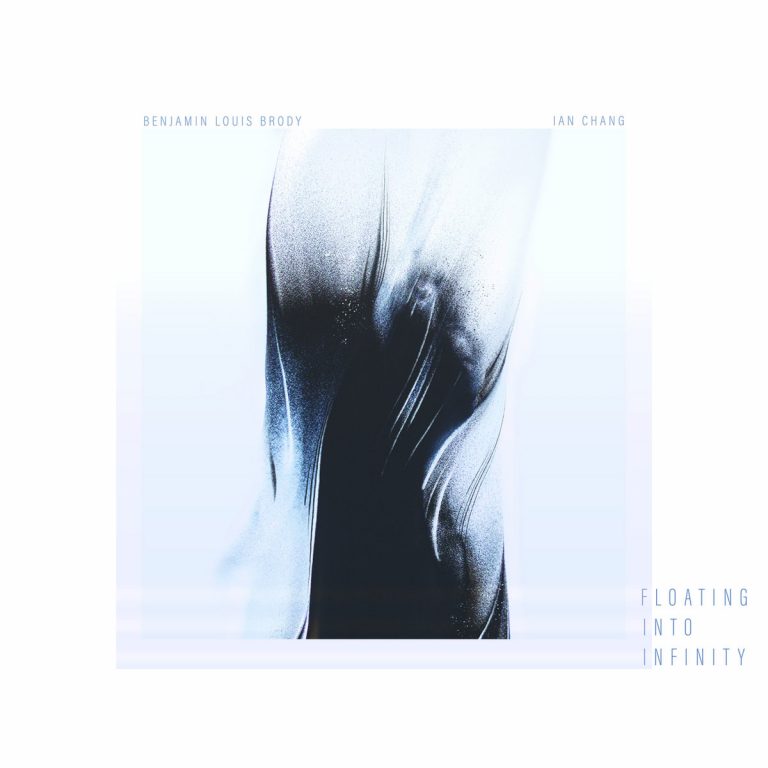The concept of infinity is quite terrifying, the notion that something can be endless and ongoing beyond any conceivable measurement of time. Therefore, when considering Benjamin Louis Brody and Ian Chang’s collaborative project Floating Into Infinity, you wouldn’t exactly be remiss in feeling a sense of foreboding – but that doesn’t mean the journey towards it can’t be pleasant.
Brody and Chang (who is also a member of the great alternative band Son Lux) let loose their ambient, immersive chemistry on the eight-track project that is both gentle and eerie. Utilising an array of synths and percussion, the pair have created a soundtrack that journeys through an alien dimension towards an uncertain ending.
The album opens with the appropriately-titled “Entry”, which primarily consists of deep synths and a frantically strummed bass guitar. This track does feel like a beginning – as if someone has unlocked the door to another universe and is slowly transferring their every atom into this alternative dimension. It becomes a symphony of low, resounding notes that eventually become a dynamic of deep and high harmonies. Following this is “Oscillation” which feels set underwater with shimmering light from the surface reflecting off of alien, unidentifiable objects in the alternative universe listeners have entered. This continues the murky synth journey yet there are bright glimmers which transform into an ambiguous brightness. The production takes an uplifting, ascendant tone within the final stretch, and perhaps misleads the listener into thinking they have left the darkness behind.
“Modum” is an instantly epic track of clattering percussion, guitar and low, resonating piano notes creating a sense of urgency. This song could soundtrack the prelude to a battle, or the confrontation to some internal opposition. It is also notable for adding some drama to the project and grabbing attention of the listeners who may be lulled into a false sense of security after the gentleness of the earlier tracks.
It is apparent that whatever ordeal was invoked in “Modum”, an escape has been made on the following “Oscillation II”. Consisting of dominant synths that oscillate in and out of different pitches, this feels like a continuation of the album’s first instalment, sounding as if you are submerged underwater again. It still retains the ambience of its predecessor, but possesses a bit more of a darker gravity.
Later highlight “Harmonics” is a song essentially in two halves: the first a collection of jagged synths and the latter an incredibly warm combination of string synths. Although the title implies what is instrumentally implemented in the song, it also embodies a story of balance with its contrasting soundscapes.
The absolute highlight of this project is the centrepiece “ASMR II”, which begins with the satisfying – and oddly crunchy – noise, which sounds like tree branches cracking and brushing against each other. This is broken up by a deeply-strummed beat that alternates in and out of prominence. As expected from the title, “ASMR II” does cause those highly sought after ‘tingles’, making this track is the perfect headphone listen, with the experience only reaching new heights when warmer tones arrive halfway through. The genius of this track is in its ability to bring forth beautiful and intriguing musicality and combine it with the world of ASMR, proving how versatile the genre really is.
The final two tracks of Floating Into Infinity feel intrinsically connected to each other. The title track is a slow-motion fall from light, as if being propelled through an empty black voice. This might sound either relaxing or unnerving depending on who you are and whether you have an overactive imagination, but regardless of the imagery it provokes, this is still a great ambient track that is ultimately calming in its encouragement to empty your mind.
The finale, “Beginning of the End”, is a beautiful track that effectively summarises the project and the journey it has taken us on. With elements from the previous tracks – the percussion, the deep synths, the alien glitches – there is an overall sense of an ending. In listening, it invokes the imagery of crashing towards something after spending this time taking in the sights afloat, and now having received the answers to some unfathomable question there must be a descent into infinity. The rough textures of the heavenly sounding synths towards the end make this final track open to what fate awaits and concludes the project on a question: where are we?
Brody and Chang aren’t necessarily trying to be explicit in what infinity is – it remains as ambiguous as the afterlife itself, and it is this ambiguity that allows listeners to attribute their own emotions to this quest. It is up to whoever consumes this project to decide whether they have been taken to a place of peace or a disquieting purgatory. That is ultimately what the appeal of instrumental music is – it relies on its audience’s imagination to draw narratives from it. While this style of music may not appeal to everyone, it is a project that succeeds in building a barrier between the listener and reality. Sometimes the beauty isn’t in knowing what awaits exactly, but the knowledge in the possibility that there is something after all.

